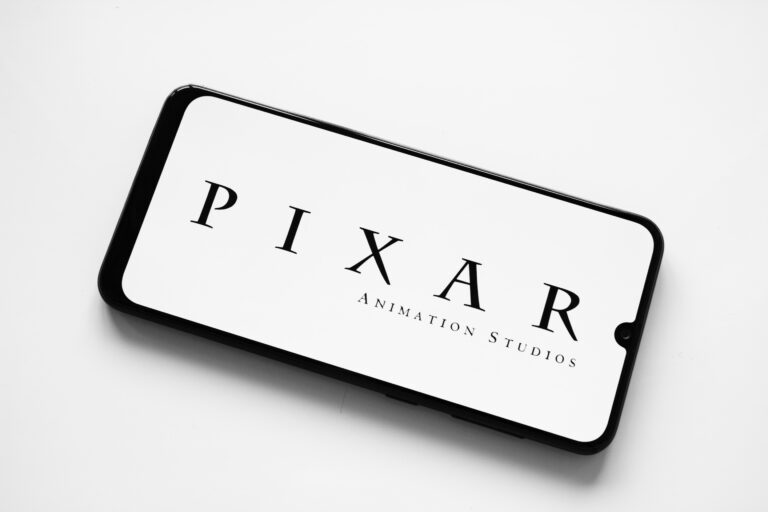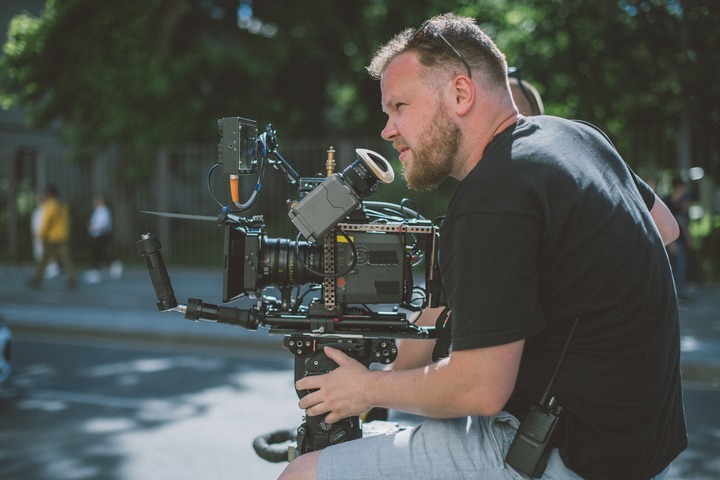Lights, camera, film tools! Behind every captivating film is a treasure trove of powerful gear, from state-of-the-art cameras to cutting-edge editing software and ingenious accessories. Film tools are game changers that empower producers to craft extraordinary cinematic experiences. But in a 35.5 billion dollar industry, which film tools best produce award-winning videos?
At Voice123, we’re all about imaginative transformations – whether in film or video. So, in this post, we’ll explore what are film tools and unveil 10 of the best film tools that will transform your filmmaking vision into an awe-inspiring reality. Are you ready to revolutionize your filmmaking experience and propel your productions to new heights?
What are film tools?
Film tools are various pieces of equipment, software, and techniques that are used to create inspiring films and other types of video content, and they include resources like cameras, lenses, lighting equipment, sound equipment, editing software, visual effects tools, and more. Producers use these tools to capture, edit, and enhance the audio/visual elements of a project, achieving specific aesthetics, storytelling, and technical execution.
For example, filmmakers and cinematographers choose digital cinema cameras, DSLRs, mirrorless cameras, and smartphones that match their specific requirements and artistic vision, enabling them to capture diverse types of footage. Lighting equipment like light fixtures, diffusers, reflectors, and gels helps create the desired mood and ambiance. And editing software like Adobe Premiere Pro and Final Cut Pro assembles and refines the footage with color correction, special effects, and rendering capabilities.
Now, here are 10 of the best film tools in the business.
10 of the best film tools
1. Blackmagic Pocket Cinema Camera 6K Pro
This compact cinema camera is equipped with a Super 35 sensor, 6K resolution, built-in ND filters, a wide dynamic range, and dual native ISO. With a 5″ touchscreen for easy control, it offers high-quality image capture, professional-grade features, and versatility for various shooting scenarios. It’s ideal for independent filmmakers, documentary production, and narrative storytelling.
2. DJI Ronin-S
This three-axis gimbal stabilizer allows filmmakers to achieve steady, professional shots on the move. The gimbal also offers multiple modes for capturing different types of shots, like follow, pan, and tilt. And since it’s compatible with various cameras, it’s commonly used in filmmaking genres like music videos, commercials, and short films.
3. Rode NTG3 Shotgun Microphone
This professional-grade microphone is designed for professional use; with low self-noise and high sensitivity, it provides clear and focused sound capture, reducing unwanted ambient noise. The rugged build with humidity resistance is suitable for challenging shooting environments, so it’s crucial for film productions, interviews, and outdoor shoots.
4. Aputure 1200D Pro
This high-output LED light has adjustable brightness and color temperature, allowing for powerful, consistent, and customizable lighting setups for various shooting conditions. It also has a Bowens mount for attaching various light modifiers and a quiet fan cooling system, making it perfect for indoor and outdoor productions like narrative films, documentaries, and interviews.
5. Sennheiser G4 Wireless Lav Mic System
This wireless microphone system offers reliable and interference-free audio transmission, allowing for flexible and convenient recording. It supports multiple channels for working in crowded RF environments and has a compact transmitter/receiver with easy-to-read displays. Interviews and on-location shoots like documentary filmmaking, corporate videos, and event coverage use this film tool.
6. DaVinci Resolve Studio
This professional video editing software has advanced color grading and visual effects capabilities for precise control over the look and feel of the footage. With its Fairlight audio features and Fusion visual effects, it offers powerful rendering options in the post-production stage of feature films, commercials, and television shows.
7. Adobe Creative Cloud
This professional editing suite includes Adobe Premiere Pro, After Effects, and Photoshop, providing comprehensive tools for video editing, motion graphics, and visual effects. The film and television industries use Adobe Creative Cloud due to the seamless integration between the different programs and access to a vast library of creative assets,
8. Teradek Bolt 4K Wireless Video System
This wireless video system transmits high-quality video signals in real-time, enabling seamless monitoring and remote viewing of footage during production. It has a robust signal range, encryption for secure transmission of video signals, and low-latency transmissions. This system is useful at live events with multi-camera setups and remote video productions.
9. Kino Flo Celeb 250 LED
This high-quality LED light panel has an adjustable color temperature, accurate color rendering, and consistent, flicker-free illumination. The slim profile, lightweight design, and built-in ballast for easy setup and transport make it popular among cinematographers. It creates soft, diffused lighting for interviews, portraits, and studio shoots.
10. Atomos Ninja V
This is a portable 4K recorder and monitor with high-quality ProRes and DNxHR recording capabilities so that filmmakers can capture and monitor high-resolution footage directly from the camera. It features a bright display with HDR capabilities and supports various camera inputs. Independent filmmaking, commercial production, and videography projects use this system.
Film tools: how to get started

Getting started with film tools requires planning and research, so here’s a step-by-step approach you can follow.
- Determine your project’s scope, genre, and objective.
- Set a budget for resources
- Consider your image quality
- Work with professionals
- Use audio/video editing software
Once you’ve determined your type of project, whether it’s a short film, documentary, or music video, you can set a budget for resources. This includes equipment, crew, locations, post-production, marketing, cameras, lighting equipment, or professional audio gear. Then consider your image quality; for example, when shooting a documentary that requires mobility, you might need a compact cinema camera like the Blackmagic Pocket Cinema Camera 6K Pro and a portable three-axis gimbal stabilizer like the DJI Ronin-S. Next, work with professionals, like those on Voice123, who specialize in voice overs, sound recording, editing, and cinematography. Finally, use editing software to apply color grading, sound design, and visual effects to enhance your film or video.
Final thoughts on film tools
So budding creators, now that you have a list of the top 10 film tools, it’s time to witness the transforming impact of filmmaking hacks on your video productions. Because in the world of filmmaking, success is propelled by the power of cutting-edge tools and technology. From cameras and lenses to lighting equipment, microphones, and editing software, film tools help you capture stunning visuals, refine your sound design, and perfect the post-production process.
And whether you’re producing a commercial, explainer video, or video game, be sure to check out the professional voice actors from Voice123 to create awe-inspiring productions.
Are you ready to turn your filmmaking dream into a big-screen reality?
FAQs on film tools
The tools used in filming are cameras, lenses, lighting equipment, sound recorders, microphones, stabilizers (such as gimbals or Steadicams), and accessories like tripods, reflectors, and filters.
To be a filmmaker, you need equipment like a camera (DSLR, mirrorless, or cinema camera), lenses, a tripod, lighting equipment, audio recording gear (microphones, audio recorders), and editing software for post-production.
Film directors use tools like scriptwriting software, storyboards, shot lists, camera monitors, communication devices (walkie-talkies), and playback monitors to review footage on set.
The 4 elements of filmmaking are cinematography (visual composition, lighting, camera movement), sound design (dialogue, music, sound effects), production design (sets, props, costumes, makeup), and editing (assembling footage, pacing, transitions).




























